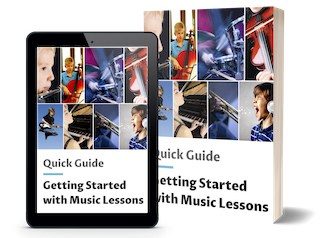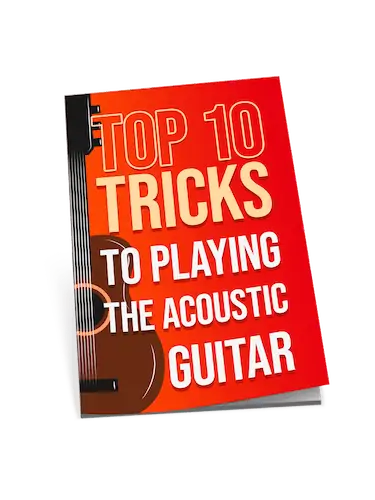Best
Mechanical Metronome
-
Overall: With A Traditional Metronome Design And A Wind Up Mechanism
-
Best Feature: A Pendulum And A Pyramid-Shaped Case That Makes It Look Unique And Stylish
-
TedScore™: 9/10
Best
Digital
Metronome
-
Overall: It Provides Various Tuning Modes, Beats, Tempo Settings, And Rhythm Types To Provide Users With A Variety Of Options For Practicing.
-
Best Feature: A Memory Backup Feature, Auto-Power Off, And An Adjustable Volume Earphone Jack
-
TedScore™: 9/10
Best
Silent-Vibrating Metronome
-
Overall: This Versatile Metronome Is Also Battery-Free, Making It Suitable For Use Anywhere Without Access To Power.
-
Best Feature: A Digital Display That Displays Both The Tempo And Time Signature Of The Piece Being Played (If You Buy The New Model).
-
TedScore™: 9/10
Musicians everywhere know why a **metronome** is a must-have tool. It **sharpens** rhythm and timing, which are key for playing any musical instrument.
But how does a metronome help a guitarist?
In this article, I’ll discuss the different types of metronomes available and how you can use a metronome app to improve your timing. I’ll also give you a fabulous list of the best metronome for guitarists available, all of which I’ve tested.
But before getting into that, let’s see what a metronome actually is and how it can benefit a you!
Choosing the Best Metronome
Having the right metronome is essential for any aspiring guitarist. As a beginner, a great metronome really can help you improve your sense of rhythm and timing and practice playing songs correctly.
Before purchasing a metronome, consider variables such as size, tempo range, sound quality, and function. This will help you find a metronome that fits your needs and budget.

When using a digital metronomes, it’s important to use the correct tempo setting for the song you are practising. Also, be consistent with your practice time and pace to ensure optimal results.
When practising with a mechanical metronome, keep time strictly by counting out loud or using a click track or pendulum tempo. This will help improve your sense of rhythm and timing.
Type of Metronome
Different metronome types have different features that may make them more or less effective for a particular use case. For example, digital metronomes may have multiple time signatures and tap tempo capabilities, while mechanical metronomes feature visual cues for beat accuracy.
Some modern metronome types are battery-operated and portable, making them easier to use than other models.
Ultimately, it depends on your preference as to which metronome is best for the task at hand.
Brand
When choosing the best metronome for your playing, consider the brand. Some of the most popular metronome brands include Korg, Boss, and Peterson.
Each of these companies offers a range of advanced metronome features and benefits that can help you sound better.
For example, Korg metronomes are known for their reliable accuracy and wide range of tempo settings.

Boss metronomes offer rhythm patterns and playback options to help practice more effectively.
Peterson metronomes are designed specifically for guitarists and feature chromatic tuning capabilities and a visual LED display.
Whether you’re a beginner or an experienced guitarist, a metronome can help improve your sound and playing style.
Quality and Features
Digital metronomes use a digital interface for tempo-bpm conversion. Other metronome types feature visual cues such as flashing lights or arrows to help you stay in time with the metronome.
All metronome types have their strengths and drawbacks, so you must choose the one that best suits their needs and playing style.
Tempo range
The tempo range of a metronome is usually measured in beats-per-minute (bpm). It ranges from 30bpm to 250bpm.
An analog metronome has preset values, while digital metronomes can have a tempo range customizable via presets or by entering a tempo range of your own playing.
Digital metronomes can go as slow as 30 bpm and as high as 250 bpm, allowing you to practice with the tempo of your choice.
When practising with a metronome, it is important to start slow and increase the tempo gradually – that really is the trick to using a guitar metronome successfully (or any musical instruments for that matter!)
Tap tempo
Some metronomes allow you to ‘tap in’ the tempo. This feature usually displays the beats-per-minute value of the metronome in a digital readout, making it easy to set the tempo quickly.
You can’t do this on a swinging pendulum type of metronome; so just keep this in mind.
Beat variations
Digital metronomes can use different sounds to mark the downbeat of each bar, such as a different tone or a louder tick sound.
The best metronome should be capable of playing a range of beat variations, subdivision patterns, odd time signatures and signature configurations.
Tick sounds
Metronomes are used by guitarists as a practice tool. They can come with a digital beep or a percussive tone to help musicians practice at the right tempo. Almost all digital metronomes have a wood block chip sound, a pitch calibration tool, a beep sound and generally have a great battery life.
Some metronomes also have a headphone jack, which is really useful in many different situations.
Choosing the best metronome can be tricky, so it’s best to do some research and decide which features are important for your playing style. Ultimately, metronomes are vital tools for guitarists looking to improve their playing skills.
Convenience
Metronomes are essential tools for guitarists who want to improve their rhythmic consistency and build their sense of time while practising. Before purchasing a metronome, consider factors such as the type of sound, tempo range, and portability.
Power Source
When choosing a metronome for guitar practice, it’s important to consider the power source. Most metronomes are powered by batteries, but some models also offer an AC adapter for plugging into an electrical outlet.
Battery-powered metronomes are often more portable and can be used in any location without worrying about finding a power source.
Mechanical Metronomes
A mechanical metronome is a great option for guitarists looking for just a metronome with a bit of extra punch and precision. These metronomes use a pendulum to keep time, which can be really helpful as a visual aid.
A mechanical metronome’s ticking sound is more soothing than the beeping sound of an electronic one. That may, or may not, be a good thing for you. They also look beautiful; but I suppose at the end of the day, we don’t buy a metronome for its looks!
The best mechanical metronome is the Wittner 811M:
Wittner 811M Pyramid Mahogany Metronome
The Wittner 811M Pyramid Mahogome Metronome is one of the most famous pendulum metronomes on the market, with a traditional metronome design and a wind up mechanism.
The metronome features a pendulum and a pyramid-shaped case that makes it look unique and stylish. It has a wide tempo range, from 40 to 208 bpm, making it suitable for a wide range of musical genres.
However, the metronome has limited features and capabilities, so you may want to look at other options if you need more functionality.
Overall, the Wittner metronome is an excellent choice for musicians who are looking for a mechanical metronome with precision and ease of use.

DESIGNED FOR: musicians who are looking for a mechanical metronome with precision and ease of use
FEATURES: a pendulum and a pyramid-shaped case that makes it look unique and stylish
OTHER INFO: with a traditional metronome design and a wind up mechanism
Wittner 811M Pyramid Mahogany Metronome
When you check the price above, you’ll see there are loads of great places to buy this item. Our personal favorite is Gear4music.
It is the largest music retailer in the UK and fast becoming the most respected online music shop in the US too. Their customer service is excellent, they have competitive prices, really fast shipping, and usually have the longest guarantee.
Most professional musicians use Gear4music, so there is no reason why you shouldn’t too!
- Making it suitable for a wide range of musical genres
- It has a wide tempo range, from 40 to 208 bpm
- The metronome has limited features and capabilities
The professional musician who wrote this article combined many things,
from the product build, manufacturer’s reputation through to feedback
from other users, to create our famous TedScore™.
Wittner 836 Taktell Piccolo Metronome
The Wittner 836 Taktell Piccolo Metronome is a mechanical metronome with a plastic casing and no bell. It is lightweight at just 6.17 pounds, making it easy to take on the go.
The metronome features a digital timer, which can be set to any tempo from 10 to 200 bpm.
Additionally, the markings on the metronome are clearly marked and easy to read, making it a great tool for practice or lessons.
This metronome does not require a power source, making it more convenient than electronic models. Instead, it can operate using batteries or by connecting it directly to an instrument or sound source.
Wittner metronomes are known for their classic styling and precision sound, making them a versatile choice for every musician’s practice or performance needs.

DESIGNED FOR: it can operate using batteries or by connecting it directly to an instrument or sound source.
FEATURES: a digital timer, which can be set to any tempo from 10 to 200 bpm.
OTHER INFO: Wittner metronomes are known for their classic styling and precision sound
Wittner 836 Taktell Piccolo Metronome
When you check the price above, you’ll see there are loads of great places to buy this item. Our personal favorite is Gear4music.
It is the largest music retailer in the UK and fast becoming the most respected online music shop in the US too. Their customer service is excellent, they have competitive prices, really fast shipping, and usually have the longest guarantee.
Most professional musicians use Gear4music, so there is no reason why you shouldn’t too!
- This metronome does not require a power source, making it more convenient than electronic models.
- A mechanical metronome with a plastic casing and no bell.
- None
The professional musician who wrote this article combined many things,
from the product build, manufacturer’s reputation through to feedback
from other users, to create our famous TedScore™.
Digital Metronomes
A digital metronome is a great tool for guitarists of all levels. They offer a range of features such as adjustable volume, LED lights for visual cues, headphone jacks and more. These digital metronomes can also be found on many different DAWs and music production software platforms.
Some metronomes also have a built-in tuner, which is useful if you need to tune your guitar and don’t have your dedicated tuner on site.
Guitarists may prefer smaller digital metronomes that can be taken with them on the go. One of the best digital metronome is the Korg MA2:
Korg MA2-BLBK Pocket Digital Metronome
The Korg MA2-BLBK digital metronome is a pocket-sized digital metronome with a tempo range of 30-252 BPM. This metronome features a memory backup feature, auto-power off, and an adjustable volume earphone jack.
It provides various tuning modes, beats, tempo settings, and rhythm types to provide users with a variety of options for practicing. The metronome is also lightweight and slim in design, taking two AAA batteries with a 70-hour battery life.
The cost-efficient metronome is a great option for daily practice as it can easily fit in a pocket or backpack without weighing down the user’s practice session. The Korg MA2-BLBK digital metronome offers a range of functionalities to meet your practice needs, and in general, it’s THE metronome that we recommend.

DESIGNED FOR: daily practice as it can easily fit in a pocket or backpack without weighing down the user's practice session
FEATURES: a memory backup feature, auto-power off, and an adjustable volume earphone jack
OTHER INFO: It provides various tuning modes, beats, tempo settings, and rhythm types to provide users with a variety of options for practicing.
Korg MA2-BLBK Pocket Digital Metronome
When you check the price above, you’ll see there are loads of great places to buy this item. Our personal favorite is Gear4music.
It is the largest music retailer in the UK and fast becoming the most respected online music shop in the US too. Their customer service is excellent, they have competitive prices, really fast shipping, and usually have the longest guarantee.
Most professional musicians use Gear4music, so there is no reason why you shouldn’t too!
- The Korg MA2-BLBK digital metronome offers a range of functionalities to meet your practice needs
- The metronome is also lightweight and slim in design, taking two AAA batteries with a 70-hour battery life
- A pocket-sized digital metronome with a tempo range of 30-252 BPM
- None
The professional musician who wrote this article combined many things,
from the product build, manufacturer’s reputation through to feedback
from other users, to create our famous TedScore™.
Boss DB-90 Dr. Beat
The Boss DB-90 Dr. Beat Metronome is the best metronome for guitar practice. It offers a wide range of rhythm patterns, a built-in tuner, and advanced features like customizable accents and tap tempo. With its reliable accuracy and easy-to-use interface, the Boss DB-90 is highly recommended for guitarists seeking precision timing in their practice sessions.
This is also a metronome widely used by drummers. The metronome features four click sounds and several drum patterns, as well as a “Note Mixing” feature to create unique beats.
It has various sound options, including bass, guitar, and microphone inputs. The metronome also has a rhythm coach feature that allows users to practice playing in time with a pre-loaded beat or rhythm.
Overall, the Boss DB-90 Dr. Beat Metronome is an effective tool for practising precision and tempo control for guitar and bass players and is best suited for drummers, guitarists and professional musicians who need a reliable and loud metronome to stay on track while playing their instrument.
The metronome has 50 memory slots that can store up to 50 different patterns and beats, making it easy to use over a long period of time without overwriting the same patterns repeatedly.

DESIGNED FOR: practising precision and tempo control for guitar and bass players
FEATURES: four click sounds and several drum patterns, as well as a "Note Mixing" feature to create unique beats.
OTHER INFO: also has a rhythm coach feature that allows users to practice playing in time with a pre-loaded beat or rhythm.
Boss DB-90 Dr. Beat
When you check the price above, you’ll see there are loads of great places to buy this item. Our personal favorite is Gear4music.
It is the largest music retailer in the UK and fast becoming the most respected online music shop in the US too. Their customer service is excellent, they have competitive prices, really fast shipping, and usually have the longest guarantee.
Most professional musicians use Gear4music, so there is no reason why you shouldn’t too!
- Best suited for drummers
- The metronome has 50 memory slots that can store up to 50 different patterns and beats, making it easy to use over a long period of time without overwriting the same patterns repeatedly.
- None
The professional musician who wrote this article combined many things,
from the product build, manufacturer’s reputation through to feedback
from other users, to create our famous TedScore™.
Other Types of Metronomes
What other types of metronomes are there? Well, in recent years, a couple of unusual devices and tools for classic metronomes have come onto the market. These include:
Software Metronomes
Software metronomes are a popular choice among musicians due to the ease of use and versatility they offer. These metronomes are available online for free and function the same as digital or analog metronomes.
It is often convenient to use software metronomes on a smartphone; you always have your phone with you, so you’ll never be without the annoying tick tock!
Silent-Vibrating Metronomes
Silent-vibrating metronomes are an alternative to traditional metronomes which tick with rhythm. These metronomes use vibrations or lights to signal the beat instead of a ticking noise.
Silent metronomes can be used in live performance as a click track for musicians to stay on tempo. A great example of a brilliant silent metronome is the Soundbrenner:
Soundbrenner Pulse
The Soundbrenner Pulse is a popular wearable vibrating metronome that produces vibrations 7x stronger than a smartphone, making it one of the best metronomes for guitarists. It features a digital display that displays both the tempo and time signature of the piece being played (if you buy the new model).
This versatile metronome is also battery-free, making it suitable for use anywhere without access to power.
I have a Soundbrenner, and to be honest, I love it. You can wear it on your wrist like a watch, or there is even a chest strap if you want to feel the beat closer to your heart!!! I’d totally recommend, not just for practice sessions, but for live performances as well.

DESIGNED FOR: practice sessions, and for live performances as well
FEATURES: a digital display that displays both the tempo and time signature of the piece being played (if you buy the new model).
OTHER INFO: This versatile metronome is also battery-free, making it suitable for use anywhere without access to power.
Soundbrenner Pulse
When you check the price above, you’ll see there are loads of great places to buy this item. Our personal favorite is Gear4music.
It is the largest music retailer in the UK and fast becoming the most respected online music shop in the US too. Their customer service is excellent, they have competitive prices, really fast shipping, and usually have the longest guarantee.
Most professional musicians use Gear4music, so there is no reason why you shouldn’t too!
- A fabulous reliable metronome
- Intuitive jog dial
- Clip on metronome (or wearable)
- A little expensive
- No headphone output
The professional musician who wrote this article combined many things,
from the product build, manufacturer’s reputation through to feedback
from other users, to create our famous TedScore™.
Seiko SQ50-V Quartz Metronome
The Seiko SQ50-V metronome is an ergonomic and easy-to-use metronome that is perfect for both practising at home and performing onstage. This metronome has a choice of two different sounds for tempo and beat, a bright red LED visual tempo indicator, and a 39-position rotary dial for easy tempo selection from 40-208 bpm.
It also features flashing LED lights at the top of the device to help cue the tune for steady beat and tempo, as well as two woodblock-like click sounds.
Overall, the Seiko SQ50-V metronome is a great investment for any guitar player looking to practice efficiently and improve their playing skills.

DESIGNED FOR: practising at home and performing onstage
FEATURES: flashing LED lights at the top of the device to help cue the tune for steady beat and tempo, as well as two woodblock-like click sounds.
OTHER INFO: Overall, the Seiko SQ50-V metronome is a great investment for any guitar player looking to practice efficiently and improve their playing skills.
Seiko SQ50-V Quartz Metronome
When you check the price above, you’ll see there are loads of great places to buy this item. Our personal favorite is Gear4music.
It is the largest music retailer in the UK and fast becoming the most respected online music shop in the US too. Their customer service is excellent, they have competitive prices, really fast shipping, and usually have the longest guarantee.
Most professional musicians use Gear4music, so there is no reason why you shouldn’t too!
- Long battery life
- Simple controls
- Doesn't have as many features as others
The professional musician who wrote this article combined many things,
from the product build, manufacturer’s reputation through to feedback
from other users, to create our famous TedScore™.
The best metronomes reviews
Metronomes are essential tools for musicians to practice with, and they can be used to help musicians keep track of tap tempo. Here are our top two most advanced metronome suggestions:
Best Overall: Korg MA2-BLBK Pocket Digital Metronome
The Korg MA2-BLBK digital metronome has been rated as the best overall metronome due to its intuitive design and ease of use. The metronome has a wide range of features, such as a built-in speaker and 30 rhythms to choose from. It also has a convenient pocket size and a bright LCD display which makes it easy to read.
The metronome accuracy has been praised by musicians and is a great option for both beginners and professionals. The Korg MA2-BLBK digital metronome is an affordable option that is available in a variety of colours. Whether you’re a beginner or a professional, the Korg MA2-BLBK digital metronome is a great tool for practice and improvement.
Best Software App Metronome:
The best software app metronome is… the Soundbrenner metronome. It’s a great tool for guitarists of all skill levels.
I know, you’re wondering why I’m putting the soundbrenner in the category of ‘Best Software App Metronones’, when I’ve been discussing above what a brilliant vibrating metronome it is.
Well, aside from the fabulous wearable device, there is also a brilliant app that you can use with (or without) the physical Soundbrenner.

It has a wide range of features that allosw users to customize the metronome to suit their own playing style. These features include a beat detection feature that automatically detects the tempo of the playing and displays it on the metronome.
It also has a recording feature that lets users easily track their progress as they practice.
Another great feature of the Soundbrenner app metronome is the ability to sync it up with other musical devices, such as an electronic guitar tuner. This makes it easy for users to practice anywhere, whether at home or in the studio.
The metronome also has a built-in feature that allows users to set a tempo and practice rhythm patterns quickly and efficiently.
How To Use a Metronome To Improve Rhythm and Timing
A metronome is a tool used to help develop a steady rhythm and tap tempo for a song or piece of music. You should start slow and increase the speed as you become more comfortable playing the piece of section.
This is really where the metronome comes into its own, especially for technically difficult setions.
Being able to perform it slowly, perfectly, is great for your brain to create the neurons it needs to be able to play the difficult bit faster. And the trick is simply to increase the metronome tempo slowly, bit by bit.
Eventually you’ll get up to speed, and realise you CAN play the difficult section accurately – all thanks to the various metronome sounds!
Is It Necessary to Use Metronome in Guitar Practice?
It is necessary to use a metronome while practising the guitar? Well, to be honest, I’d say yes. Of course you can physically play the guitar without using a metronome to practice – but this handy (and sometimes annoying) device is like aircon in a car – you could technically have a car without aircon, but would you want to?!
What Does a Metronome Do?
A metronome is a tool musicians use to track the tempo and pulse. It’s a digital or analogue device that clicks at a specific rate to help the musician stay on tempo within the time signature.
Different metronomes have different features, such as digital dials for adjusting the tempo and time signature, buttons for BPM (beats per minute), and a pendulum to produce a click sound.

In digital metronomes, buttons adjust the tempo and time signature. An analogue metronome has dials and a pendulum to click the desired tempo and time signature.
Both digital metronomes and analogue metronome models can be helpful when playing music. They can help the musician develop a sense of rhythm, tempo, and time signature.
How Accurate are Metronomes
Metronomes can be a helpful tool for guitarists of all levels. They can help guitarists improve their timing and rhythm consistency, practice at a consistent tempo, and develop a sense of time.
Practising too quickly can lead to sloppy guitar playing that can only be fixed by training at slower speeds. A metronome helps ensure accuracy and maintains the same tempo throughout a practice session, helping the musician playing faster and cleaner with increased precision and ease.
A metronome is an essential tool in a musician’s toolbox, providing a reliable guide to playing with precision and ease. Plus, they’re fun to use, so why not give one a try?
Best Metronome for Guitarists
Summary
Metronomes are a useful tool for any guitarist to use when practising to ensure you stay on track, improve your technique, and successfully learn tricky sections.
For the best guitar metronome, there are a lot to choose from. My advice is go for one that has multiple time signatures, a tap tempo feature, a backlit display with a clear visual cue, and ideally a model that is a tuner and metronome in one.
All the models on this page are superb, and you can’t go wrong with any of them.
Enjoy your tick and tock, and drop a note in the comments with what option you’ve chosen!
Before you disappear: You may find out Top 21 Guitar Accessories article helpful…
FAQ's
Yes, guitarists do use metronomes to both practice guitar, and improve their abilities. Metronome use is a great way to help guitarists maintain a consistent tempo while playing. Even if a guitarist is just starting out with the instrument, they can use a simple metronome sometimes to benefit their practice.
For beginner guitarists, it can be beneficial to start slow and gradually increase the metronome’s speed. As a guitarist becomes comfortable with the chord progressions or musical patterns they are playing; the metronome tempo should also increase. In addition, metronomes can be the instruments used to check that the guitar parts being played are accurate and in time with a drummer or bassist.
If you are looking to use a metronome for guitar practice, then the best approach is to start at the slowest tempo you can achieve without making any mistakes. This will help you to develop a sense of rhythm and tempo when playing guitar, while also improving your accuracy with guitar playing.
The best BPM for guitar practice depends on the individual and the technique being practised. Generally speaking, it is best to start with a tempo of 60-70 BPM and increase the speed as you become more comfortable with the technique. When practising with a metronome, it is best to start at the slowest possible speed and gradually increase it as you understand the concept better.
When it comes to buying a metronome, there are several factors that you need to consider. Depending on your playing style and instrument, different metronome types may work best for you. Generally, digital metronomes offer the best precision, while analogue metronomes are great for those who want a traditional sound. And remember, get a metronome with the tap tempo function.
Metronomes are a great tool for musicians of all levels, as they help to keep a steady tempo during musical practice. Metronomes generally come in two types: mechanical and electronic metronomes (and metronome apps).
When it comes to mechanical metronomes, there are three main styles of construction. The pendulum metronome is the most traditional type of metronome, using a weighted pendulum that moves back and forth at certain tempo and time signature settings. There are also digital metronomes, which use digital sound chips to sound a tempo-based tone, as well as metronome clicks, which sound a metronome-style tempo along with a drum sound.
Yes, all of the musicians in a band should have a metronome when playing together. The reason for this is that tempo and time signature are essential components of playing together as a band. Having everyone on the same page with regard to tempo can help keep the band sounding tight and cohesive.
You can buy a metronome online from various music stores like Amazon, Gear4music, Guitar Center, or Sweetwater. You can also find metronomes at local music stores or instrument shops.











Digital all the way, those old-school ones look cool but who has time for winding?
While the article presents a comprehensive view, I must challenge the notion that one metronome can be best for all. Pedagogically speaking, the choice between digital and mechanical metronomes should be guided by the student’s learning style, the immediacy of feedback needed, and the auditory perception of the metronome’s sound. Foundational timing skills can indeed be cultivated with either, but the tactile response and visual motion of a mechanical metronome often provide a more engaging learning experience for novices.
maybe so, but dont u think feeling the beat is more about internal timing than what gadget you use?
interesting point! never considered how the type of metronome could affect learning.
Really appreciate the detailed breakdown on metronomes, especially the digital vs mechanical. I’ve been leaning towards digital for the convenience, but it’s nice to see the pros and cons laid out so clearly.
hey Hugh Richardson, do you think using a metronome makes a big difference for casual players? just tryna get better but not sure if it’s worth the hassle.